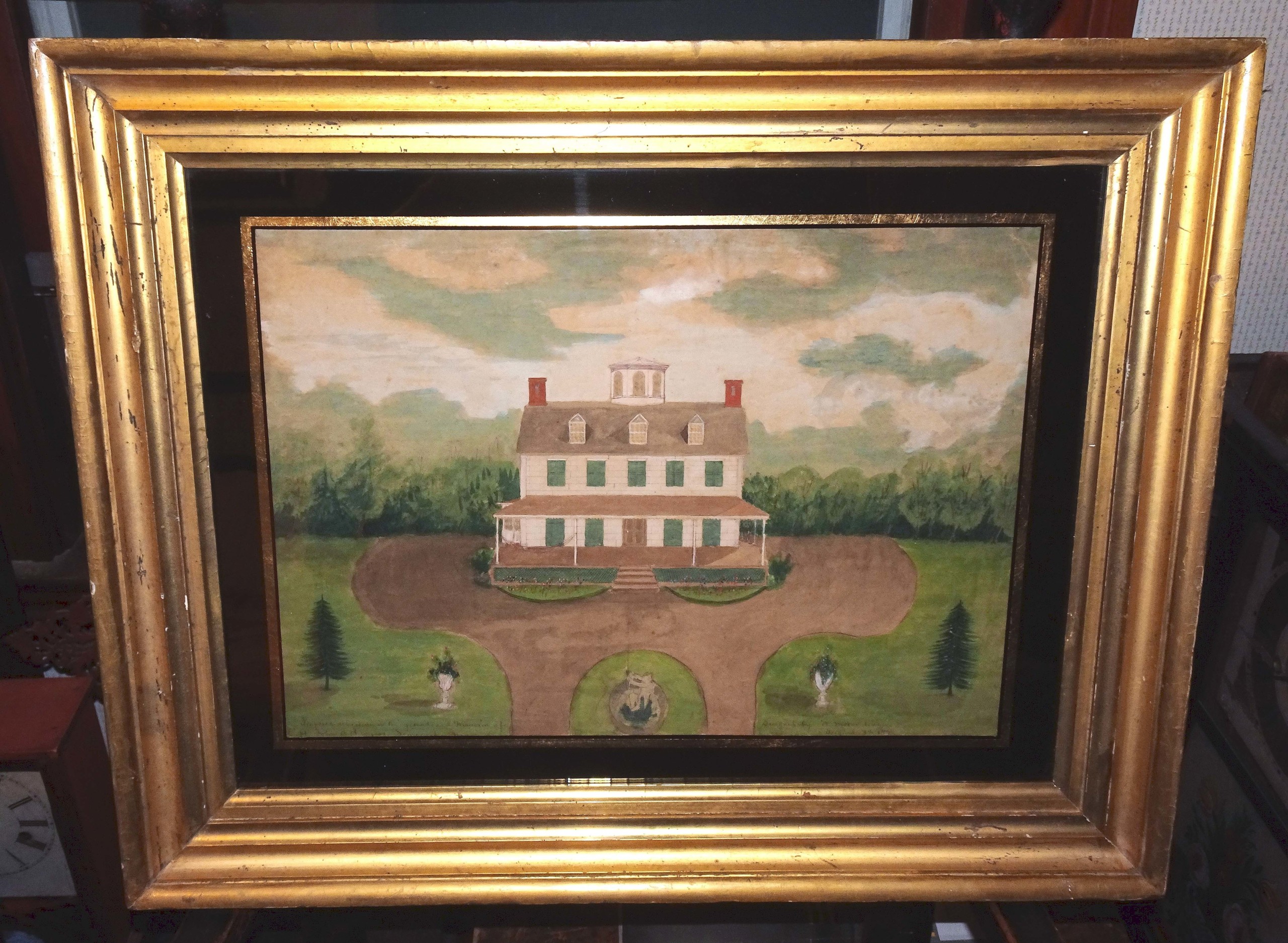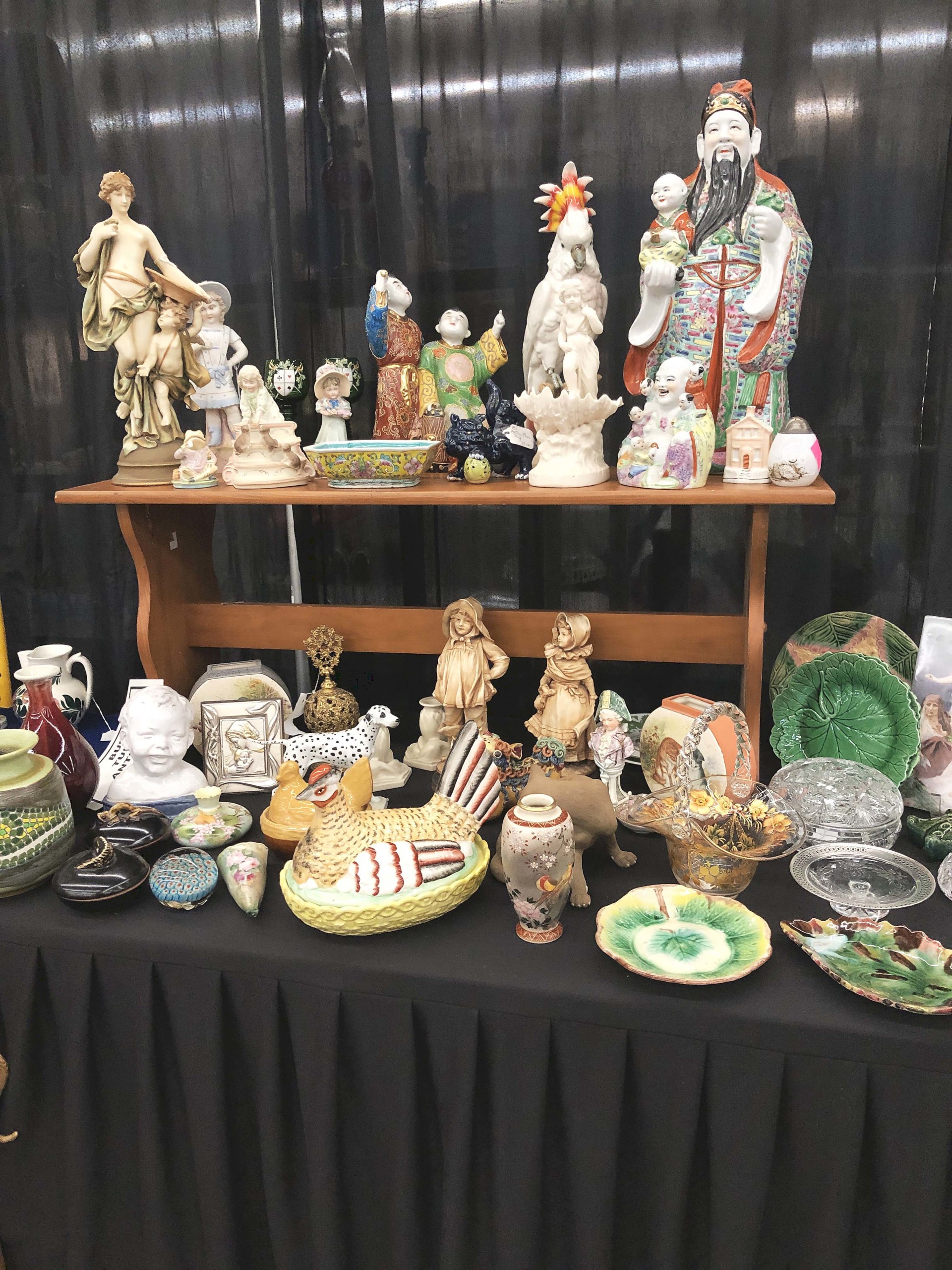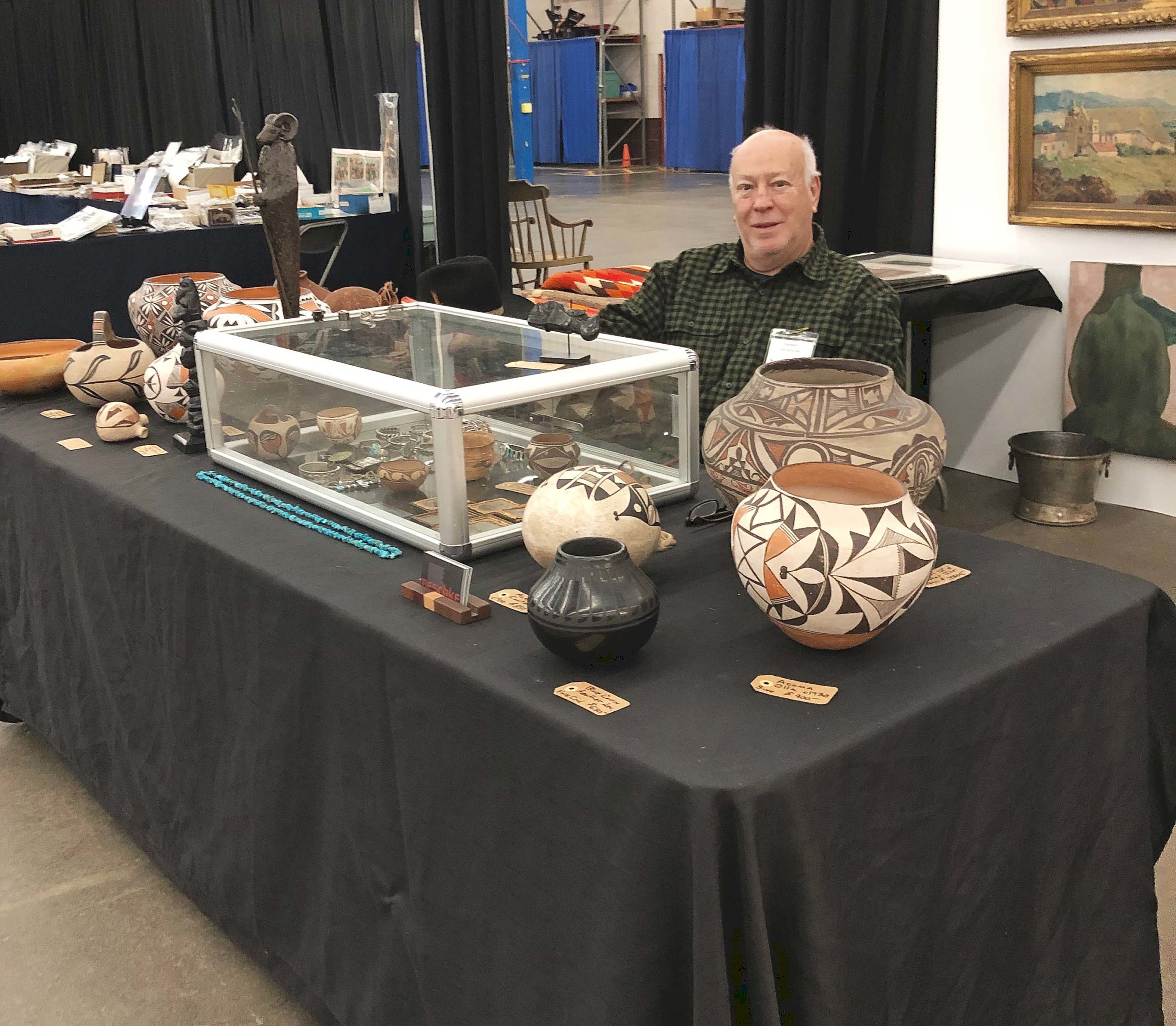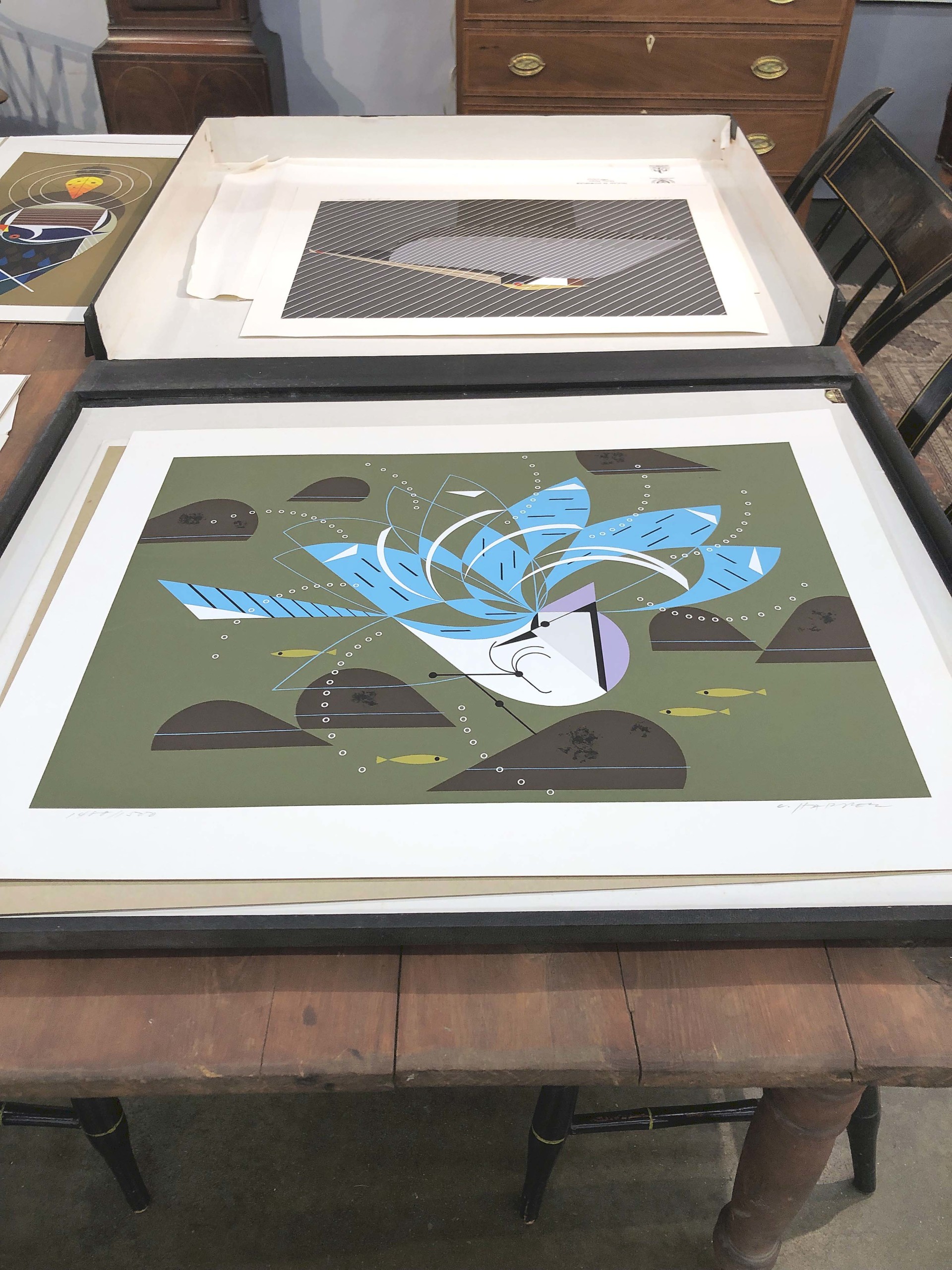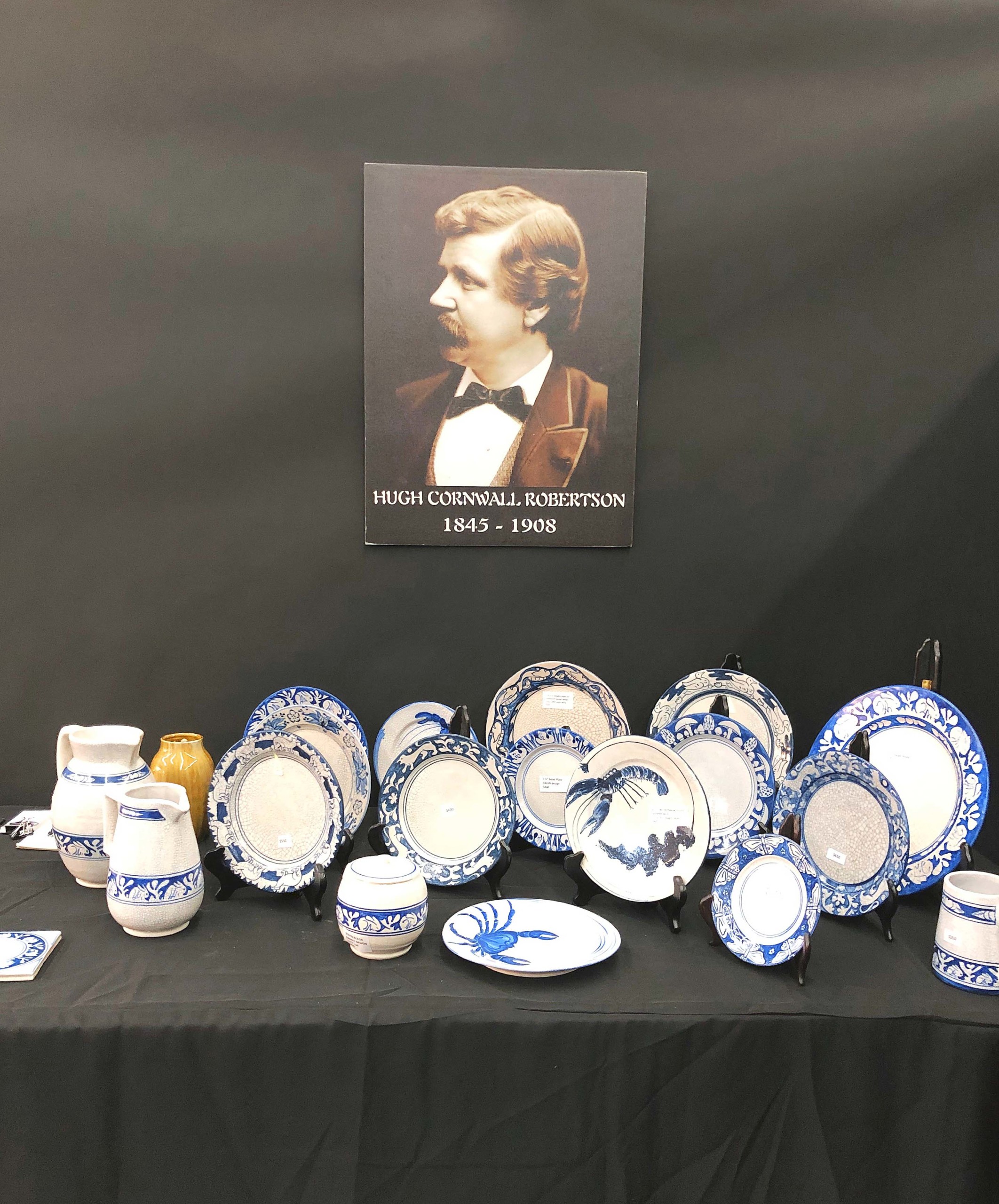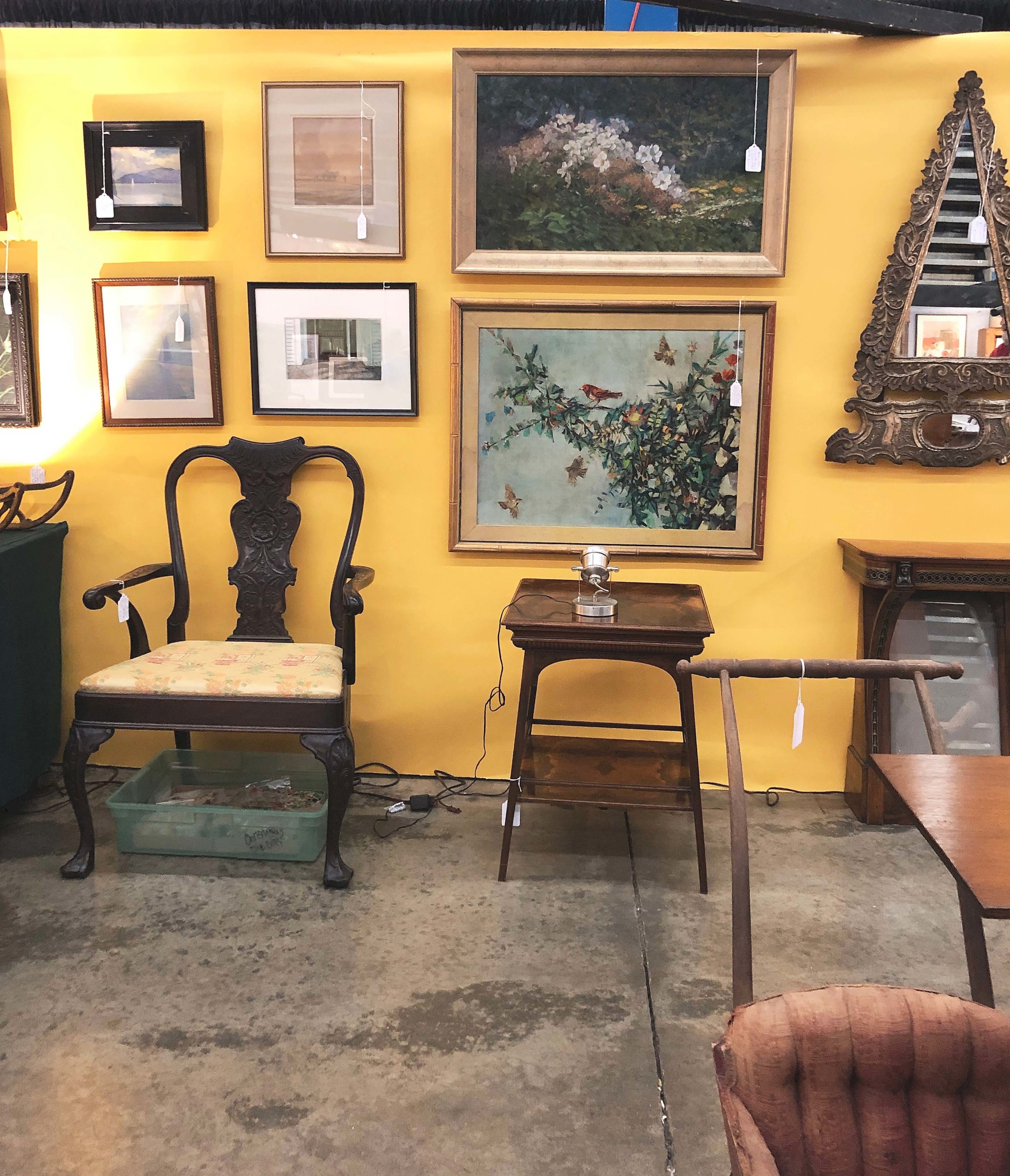
Brad Finch, Brewster, Mass., offered this large, elaborate armillary sphere used in schools to teach students about planets and asteroids. It was French and marked $6,500.
Review & Photos by Rick Russack
WILMINGTON, MASS. — There were 67 dealers at Goosefare’s Greater Boston Antiques Show and Sale. Conducted December 2 and 3, it was the perfect time for Christmas gift shopping, the show had more dealers than the year before, and the good-sized crowd was about the same as last year. The show, at the Shriner’s Auditorium, had been a staple for years until Covid-19 caused it to be discontinued and the previous promoter chose not to try to revive it.
Goosefare did the show in 2022 and is steadily rebuilding it. They have a strong dealer base to build on as they manage several other shows in New England. Some of the exhibitors at the show are not frequent antique show participants, such as John Kuenzig who buys and sells scientific instruments and books about science, and Chip Neschke, who sells vintage Southwestern Native American pottery and weavings and mixes in some midcentury studio pottery. One booth had nothing but Dedham pottery and pots by Hugh Robertson, the founder of the Dedham pottery company; it belonged to Jim Kaufman who lives in Dedham, Mass., is president of the Dedham Historical Society, and has been collecting Dedham pottery for decades. When asked if he has the largest collection of Dedham, Kaufman replied, “I wouldn’t say that, but I do have quite a bit. These days, I’m seeking out rarer patterns, like the crab and lobster. And I’m especially seeking the work of Robertson. He was a master potter and is well-known for the distinctive glazes he developed when he ran The Chelsea Keramic Art Works before he formed the Dedham company. I have an assortment of the Dedham patterns here, including those more often seen like the rabbit, and those less often seen like the turtle. The turtle pattern pieces are priced between $500 and $800 depending on size and form. It’s not an easy pattern to find.”

John Kuenzig, Topsfield, Mass., deals in books about science, patent models and early scientific instruments. The brass microscope pictured, with its fitted case, was made in London circa 1820 and was priced $2,750.
Among the offerings in the booth of John Kuenzig, Topsfield, Mass., were early microscopes, including a circa 1820 monocular example complete with fitted mahogany case for the accessory lenses. Made in London, it was priced $2,750. He also had an early binocular brass microscope which was priced $1,500. He was asking $850 for a copy of the Photographic Lunar Atlas, based on photographs taken at several observatories, including Mount Wilson, Lick and others. First published in 1960, it included 288 photos of the lunar surface as it was known at that time and was used in planning the first lunar landing. A first German translation of Darwin’s Origin of Species, with a tipped-in albumen photograph of Darwin, was priced $2,000. Perhaps Kuenzig gets credit for the most unusual item in the show. It was a small grayish cap with a tube attached allowing for an air line to be attached — which, it was thought would help a man grow hair. The price was $175.
Kuenzig was not the only dealer to bring scientific works, or, in this case, educational items. Brad Finch, Brewster, Mass., had a large, elaborate armillary sphere used in schools to teach students about planets and asteroids. It was French and priced $6,500. He also had a hand-drawn proof of a broadside made to thank donors to a 1927-31 restoration project of the USS Constitution, priced $1,200. It was the first time Finch had exhibited at the show, having retired after running a shop in Chatham, Mass.
Patti Bourgeois, Westport, Mass., specializes in two particular categories. One is art pottery, such as Rookwood, Roseville, Weller, Grueby and others, while the other is Japanese woodblock prints. She had hundreds on display and when asked for a brief explanation, she said that woodblock prints were basically produced in three time periods. Ukiyo-e style prints, the earliest, were produced from the 1600s to the 1800s. The often-seen image, “The Great Wave,” was first produced in this period and has been reproduced ever since. Shin Hanga prints were produced from the mid-1800s, after Japan was opened to Western influences and markets. In the mid-Twentieth Century, style noticeably changed again, reflecting more modern tastes. Her prints, each with extensive descriptive labels, were displayed and grouped according to the period in which they were produced, and prices varied depending on artist, period and size, from the low-three-figure to mid-four-figure range.

The early writing-arm Windsor, priced $6,800, was in the booth of Dennis Raleigh and Phyliss Sommer, Pumpkin Patch Antiques, Searsport, Maine. The bottles dated to about 1800 and were priced between $750 and $975.
Dennis Raleigh and Phyliss Sommer, Pumpkin Patch Antiques, Searsport, Maine, filled a booth with early furniture, trade signs, decoys and folk art, several pieces of which sold. At the front of the booth was a sack-back Windsor writing armchair attributed to Ebenezer Tracy, who was active in Connecticut from 1795 to 1805; it was priced $6,800. They also had three early black glass bottles; a large free-blown onion bottle priced $900, a circa 1820-30 ship’s bottle priced $975, and an Eighteenth Century gin bottle priced $750.
Bob Markowitz, Groveland, Mass., researches things extensively and he had several good pieces of folk art, including watercolors. With him was a watercolor painting of a two-story house with cupola that was inscribed as the “Captain John Burgess” house in Somerset, Mass. Research indicated Burgess was master of the clipper ship David Crockett from 1860 to 1874. The ship, built in 1853 at a cost of $93,000, was in service until 1899. According to an 1870 sea-shanty, Burgess was not a popular commander as it goes, “Davy Crockett is her name/And Burgess is the Captain of her/And they say she’s a floating Hell.” In April 1874, her departure from Liverpool was delayed due to the mutiny of the crew and in June 1874, Burgess was reported “swept overboard” by a gale near the Rio de la Plata off the coast of South America. This watercolor sold during the show as did a number of other items in the booth.
Early furniture was available in several booths. Raleigh had the writing-arm Windsor mentioned above; Martin Ferrick, Lincolnville, Maine, filled a booth; and Goosefare Antiques, Saco, Maine, had a tiger maple four-drawer chest priced $3,500; Brad Finch had a pine one-drawer blanket chest; and if your tastes ran to Midcentury Modern, Brett Cabrall, Salem, N.H., had a pair of side chairs designed by Eero Saarinen for Knoll priced $795.
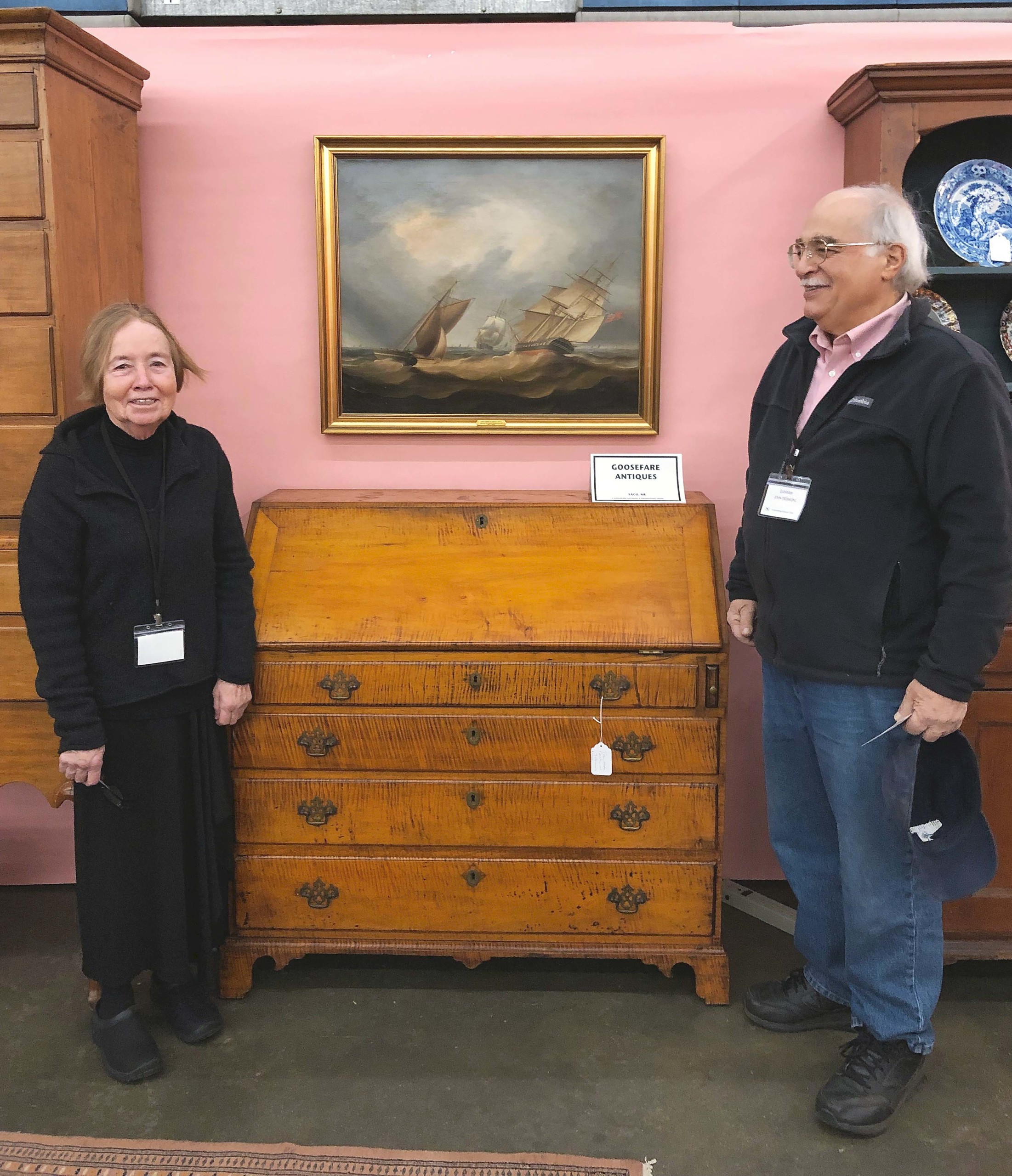
Liz and John DeSimone manage this show as well as several others in New England.
After the show, John DeSimone said that he and he his wife, Liz, were satisfied with the show. “We’ve been working on promoting the show as best we can, using print ads and social media. Dealers are helping by posting photos to Facebook and Instagram. There were more than three dozen photos posted by the time the show opened. We had 67 dealers from seven states and people had plenty to look at. The dealer count was up from last year and we have space to add more. We have the dates reserved for next year and expect it to continue growing.”
For information, 800-641-6908 or www.goosefareantiques.com.

